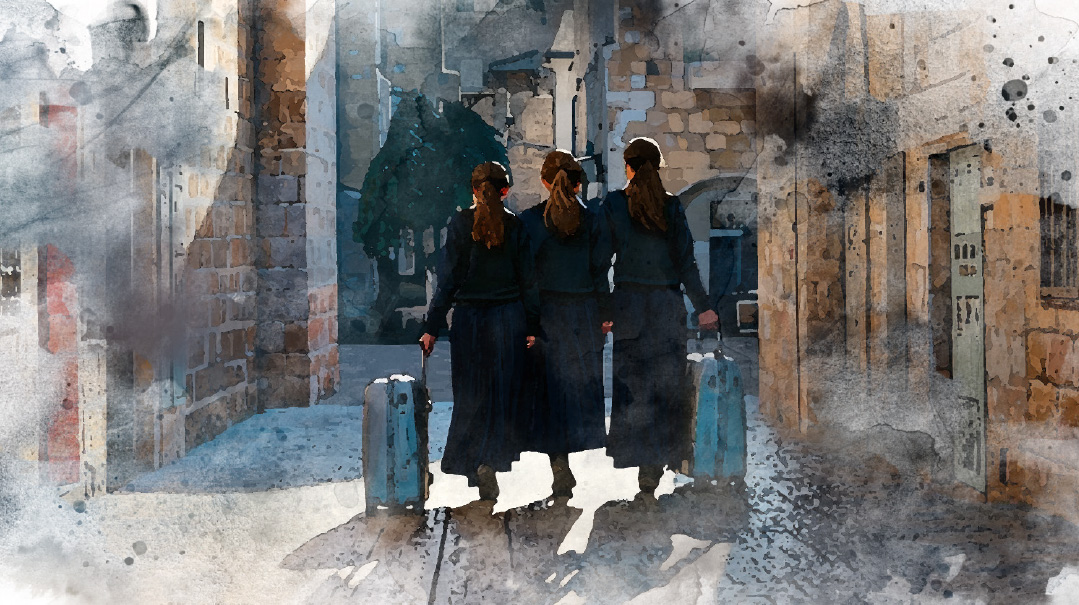Animate the Trend

People relate to people. That’s true when it comes to visuals, and it’s true of storytelling as well

This week’s magazine features one of the more challenging types of features to write: the trend story. This genre doesn’t fit neatly into our typical mental categories for features. Everyone is familiar with the profile, the breaking news report, the travel piece. A trend story isn’t any of those.
Trend writers isolate streams or channels of thought, movement, or action and try to figure out how individual details swim within those streams. They can talk about leadership styles, school acceptance policies, changing attitudes toward alternative medicine, intergenerational conflict. Usually these writers are big-picture thinkers who see larger implications in smaller stories and place those events in a more global, societal type of frame. This type of writer can take those three different discussions you’ve been hearing in varying versions at shul, simchahs, and the office, and explain how the various arguments are really part of one comprehensive issue.
If you have that “big picture” brain and you’re writing this type of story, however, you shouldn’t forget about the other tools in the writer’s box. Your focus is the trend, but you still want the current factor of a news story and the facts and figures of an “explainer” type of piece. Your story is stronger and more compelling when it revolves around some current development, not just a discussion of ear infections in children (actually, that’s always current). And without the stats and numbers, there’s not much authority — it’s just coffee room talk.
But even when you have a mastery of the issues, a current hook, and your math adds up, there’s still another game-changing element, and that is using people — real live human beings — to animate the piece.
Over the past few years, we’ve all read our fill of features on America’s changing voting habits. These pieces are about bigger patterns and movement, and they rely heavily on stats and numbers and percentages. But you’ve probably found that some bored you and others engaged you. And the difference usually boiled down to the human element.
When writers were able to bring human beings into their pieces, to paint the gritty details of their lives, then we weren’t hearing about inert colored blocs on voting maps. We were hearing about 32-year-old Amy from Virginia who’s worried about her kid’s education, Hank the truck driver who can’t make it through the month, and Lizbeth and Leroy, the activists knocking on doors and finding their prepared pitches aren’t really speaking to the people behind them.
People relate to people. That’s true when it comes to visuals — a photo of a person will always grab more eyes than a photo of a flower — and it’s true of storytelling as well.
One way to understand feature-writing is as storytelling with purpose. Humans process trends through human experience, and even if your story is about economic change, or geopolitical shifts, if you can find those people to serve as the prism through which your story is reflected, you’ll be able to humanize the trend. And that’s how you’ll get readers invested in your story.
Recently a few editors on our team picked apart a great piece about China’s subtle infiltration of several Israeli facilities. We noticed the solid reporting, the sharp analysis, the historical background. But most of all, we noticed the writer’s skill in framing the story around a quirky character — a Chinese man who’s become an icon in Israel for his upbeat clips in perfect Hebrew.
Yes, these stories are a lot bigger than the individuals you choose to include. And when a writer overdoes the exposure, turning a single player and their limited perspective into the beginning, middle, and end of a complex trend, then we can all sense the lack of proportion. But in the right ratio, wrapping a story in its people will make readers all the more eager to unwrap your package — because you’ve given it the detail, emotion, and staying power that every reader seeks.
—Shoshana Friedman
Managing Editor
(Originally featured in Mishpacha, Issue 903.
Oops! We could not locate your form.





